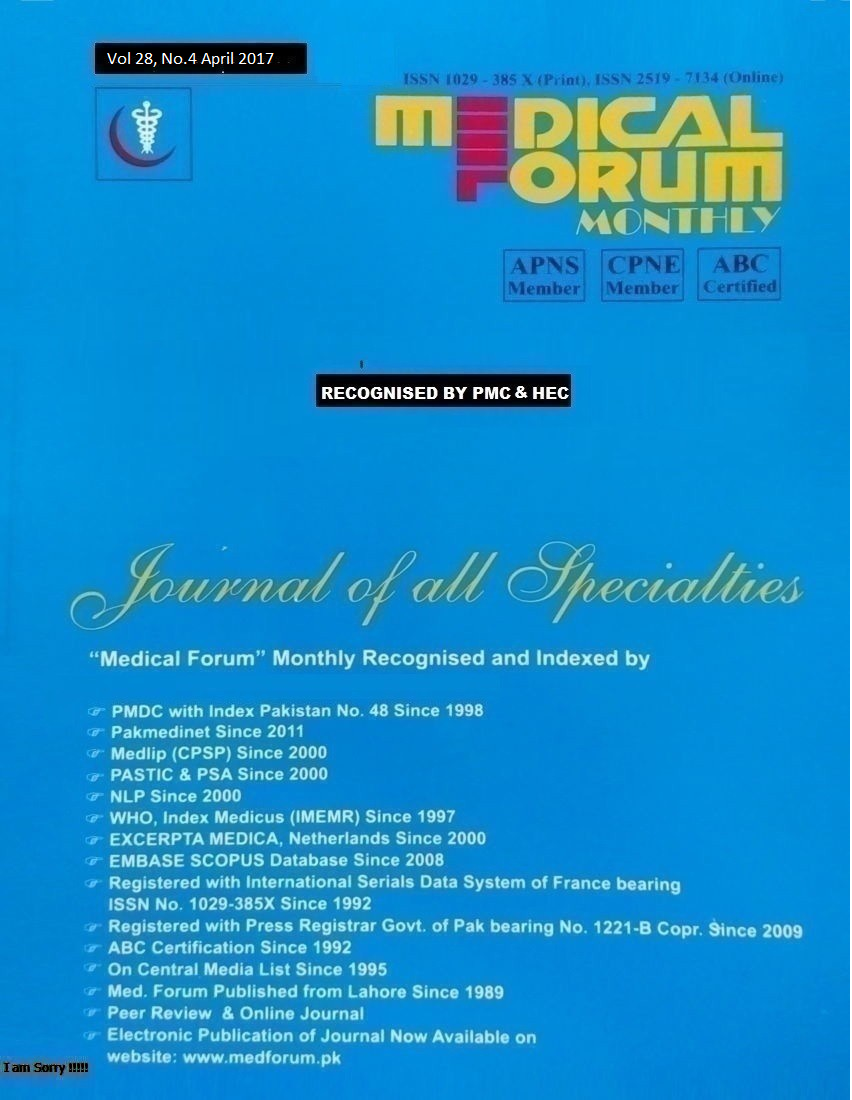
10. An Experience With and Without Insertion of Subcutaneous Wound Drain in Stomal Reversal
Ahmed Hussain Pathan1, Gulshan Ali Memon2, Arshad Hussain Abro1, Syed Kashif Ali Shah2, Rafiq Ahmed Sahito2, Habib-ur-Rehman2, Shahnawaz Leghari2 and Shahida Baloch2
ABSTRACT
Objectives: To evaluate the outcomes of SSI with or without Subcutaneous suction drain in ileostomy closure.
Study Design: Prospective interventional randomized control trial (RCT) study study.
Place and Duration of Study: This study was conducted at two Units of Surgery at tertiary care academic hospitals of Liaquat University of Medical & Health Sciences Jamshoro (LUMHS) and People’s University of Medical & health Sciences, Nawabshah (PUMHS) from February 2013 to March 2016.
Materials and Methods: 140 patients of both genders from 16-60 years in age, who underwent for elective open reversal of protective Ileostomy were enrolled in this prospective interventional randomized control trial (RCT) study after having informed consent to participate as per described policy. Patient having ASA of group III or malignancy were not enrolled in this study. Study population was divided into two A and B groups based on having or not having insertion of SD respectively. The simple randomization for probability of sampling was achieved. While samples were of equal size of 70 each to maintain the balance. Follow up at 10th day after discharge then fort-nightly for 3 months.
Results: In this plot of 140 patients, 12 (8.57%) males and 5 (3.57%) female developed wound infection in general.
While, the incidence of SSI in group B (without SD) was 20% (14/70) and 4% (03/70) in group A (with SD). Anastomosis leak was observed only in B group. The median post-operative hospital stay was 14 (range, 9-42 days) in B group and 12 days (range, 8-27 days) in group A. There were hospital re-admission in 03 patients of B group, with no mortality in any group. However, the incidence of SSIs when comparing both groups (group B versus group A), did reach statical significance of P < 0.38.
Conclusion: We believe that SD has potential benefit in high risk patients and patients with deeper subcutaneous fat in closure of ostomy wounds.
Key Words: Subcutaneous wound drains, Ileostomy reversal, Post-operative wound infections
Citation of article: Pathan AH, Memon GA, Abro AH, Shah SKA, Sahito RA, Rehman H, Leghari S, Baloch S. An Experience With and Without Insertion of Subcutaneous Wound Drain in Stomal Reversal. Med Forum 2017;28(4):38-41.
